Types of Pso
Types of Pso
There are a few different forms of psoriasis (Pso), and some people may suffer from different types at different times.[1] Take a look below for more information, including the parts of the body that can be affected and what the various types of Pso look like.
Plaque Pso

Areas affected

Plaque Pso
Silvery, swollen scales called plaque psoriasis is the most common type of Pso, affecting up to 90% of people with psoriasis.[1]2 It can be painful and itchy and usually affects the knees, elbows, trunk, scalp, behind the ears, navel, and between the buttocks.[1]2345 If you have this type of Pso, you may have a few, spaced-out plaques, or they can join together to form larger plaques.4
Guttate, or drop Pso
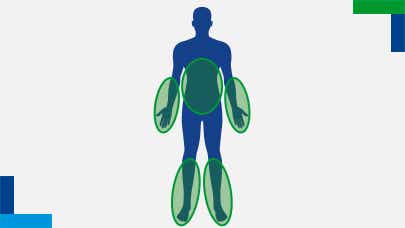
Areas affected
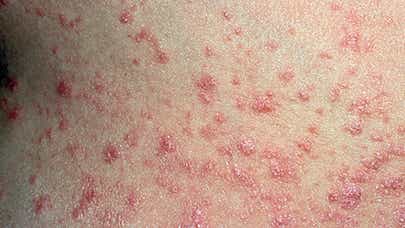
Guttate, or drop Pso
This type of Pso affects about 8% of psoriasis sufferers and appears more frequently in children and young adults.6 Lesions look like small, red, scaly ‘drops’ that look as if they’ve ‘fallen’ onto the body.7 They usually appear on the trunk and extremities.[1] If you have these drops, they could be the first sign of Pso, or happen alongside plaques.7 They can be triggered by bacterial infections, including throat infections and tonsillitis.7 Guttate psoriasis usually clears up within a few months with little or no treatment but may progress to chronic plaque psoriasis.7
Inverse Pso
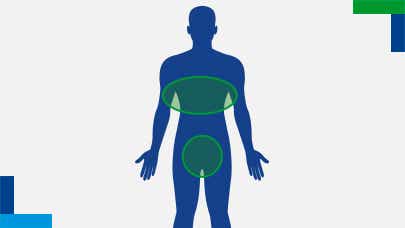
Areas affected
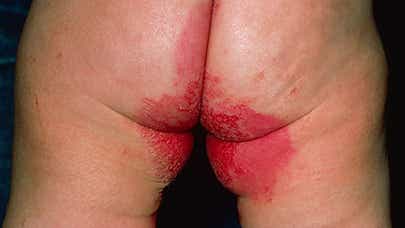
Inverse Pso
Erythrodermic Pso
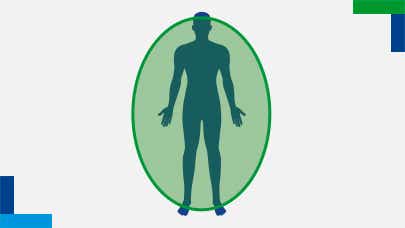
Areas affected

Erythrodermic Pso
This is an unusual and severe type of psoriasis affecting over 90% of the body’s surface area.49 The skin is very red, painful and itchy, sheds and looks as if it’s been burned.10 It can be triggered by certain medicines, through severe sunburn, infection stress or alcoholism.10 It can also commonly lead to chills, fever, dehydration and generally feeling unwell.[1]10 If you think you have erythrodermic psoriasis, you should see a doctor immediately.5
Pustular Pso
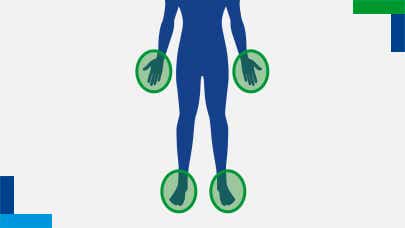
Areas affected
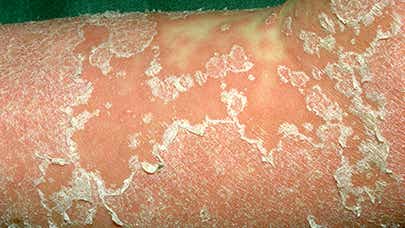
Pustular Pso
This type of psoriasis is not very common.4 White bumps full of pus containing white blood cells form on the skin and are surrounded by red skin.11 They can appear in a small number of areas (often on the hands and feet), or across the whole body.11 They are not contagious, but can be difficult to treat and may come back.11
Nail Pso

Areas affected

Nail Pso
Psoriasis can cause changes to the nails, such as pitting (deep to shallow holes) or ridges (lines running from the nail bed to the end), crumbling, loss of nails, and the ‘oil drop sign’ – a salmon pink discoloration of the nail bed.412 Nail psoriasis happens in about half of people with Pso. If you have nail psoriasis, you are more likely to develop psoriatic arthritis.13
Psoriatic arthritis can affect people with Pso
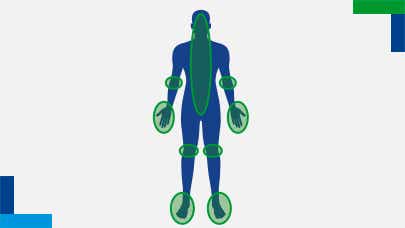
Areas affected
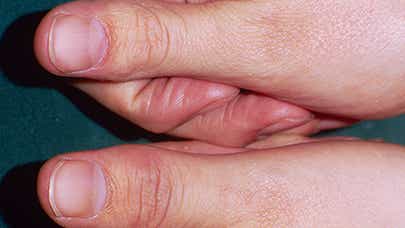
Psoriatic arthritis
Psoriatic arthritis, or PsA, is a type of arthritis that develops in about 30% of people with psoriasis.13 It may happen before or after you develop Pso, or at the same time.14 Joints may become stiff, swollen, tender and painful, limiting movement, and causing structural damage and deformed joints.15 If it isn’t treated early, PsA can cause permanent damage.15
Don’t ignore the signs:1516
- Pain or joint stiffness that’s worse in the morning and lasts for longer than 30-60 minutes
- Foot pain, especially at the back of the heel or sole of the foot
- 'Sausage-like' swollen fingers and toes
- Feeling unusually tired
- Changes to your nails
- Red, painful eyes - a bit like ‘pinkeye’
So, if you have Pso and your joints feel achy, be sure to speak to your healthcare professional. We’ve put together some tips of making the most of each appointment.
Want to find out more about PsA?
Explore a website dedicated to psoriatic arthritis, including information about treatments.
You may be interested in

Get quick answers to the most common questions about psoriasis.

Make every moment of the consultation really count.

We have a few added extras for you to download.
References
